Category: Essays & Reviews
-

The New American Old West: Bruno Dumont’s Twentynine Palms
This essay was originally published at Senses of Cinema.
-
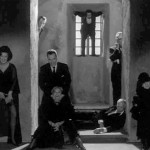
Hour of the Wolf (1968)
Hour of the Wolf is Ingmar Bergman’s vampire film. Let me repeat that: Hour of the Wolf (1968) is Ingmar Bergman’s vampire film.
-
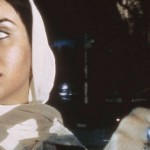
Talkin’ About Movies
Last night I delivered the following talk at the 2004 NEXUS Interdisciplinary Symposium: Reconstructing Theory and Value.
-

Great Directors: Hal Ashby
This essay was originally published at Senses of Cinema.
-

Great Directors: Tsai Ming-liang
This essay was orignally published at Senses of Cinema.
-
Beau Travail (2000)
Whereas post-colonial critics have, in turn, criticized/praised Melville for his appropriation of racist stereotypes (or his subversion of those stereotypes, depending on which side of the debate each critic stands), Denis situates Melville’s moral dilemma in an explicitly post-colonial situation, complicating further the relationships between European and African, Christian and Muslim, and calling into question the political value and motivations underlying those relationships.
-
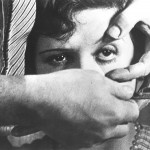
Un Chien Andalou
My favorite discussion of the famous eye-slicing sequence can be found in Virginia Carmichael’s Framing History, where she compares Bunuel’s film to E.L. Doctorow’s The Book of Daniel, a novel that attempts to make sense of the early Cold War years.
-

Adaptation (2002)
The problems of irony, particularly when of the postmodern bent, are on mind-numbing display in Adaptation, a film that collapses under its own self-referential weight so many times that, at some point — and I think it was right about the time that Meryl Streep started humping Chris Cooper — I stopped watching the film and began waiting for it to end.
-

Through a Glass Darkly (1961)
What Bergman does get absolutely right in Through a Glass Darkly, though, is the very real horror of the existential crisis, the moment when Camus’s Sisyphus pauses, watching his stone roll once again down the mountain.
-

Full Metal Jacket (1987)
I wonder if it might be more useful to call FMJ an anti war-movie movie. For the auteur is obviously fascinated, in a deliberately self-reflexive way, with the influence of images and storytelling on the formation of what might be described as ideological mythology.
-
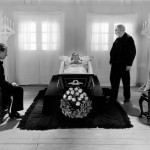
Ordet (1955)
That sudden, strange, and fleeting encounter with something beyond ourselves, something almost otherworldly, transcendence is both the aspect of the arts to which I’m most drawn and about which I feel least capable of writing.
-

Frida (2002)
Julie Taymor’s Frida is a better-than-average 2-hour biopic, evidencing many of the typical strengths and weaknesses of the genre — a fascinating life told too quickly that borders, uncomfortably at times, on hagiography.
-

Punch-Drunk Love
I assumed that I would witness something special in a dramatic performance from Adam Sandler, which I did, but I wasn’t expecting such precise and economical filmmaking.
-

What Time Is It There? (2001)
All three characters in What Time is It There? represent Tarkovsky’s ideal — those who are “outwardly static, but inwardly charged with energy by an overriding passion” — and that passion alone is reason enough to watch.
-
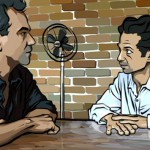
Holy Moments
Film, when rightly enjoyed, can offer holy moments such as this during which we are able to escape, even if only temporarily, from this “extraordinary egoism” into the freedom of God’s grace, experiencing anew the beautiful complexity of his creation and our selfless calling in it.
-
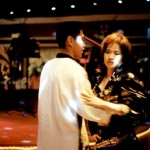
Good Men, Good Women (1995)
The first cut in Good Men, Good Women establishes several dichotomies that, over the next 100 minutes, are beautifully dismantled for explicitly political purposes.
-

La Promesse (1996)
La Promesse is a wonderful film whose beauty is born from the Dardennes’ suffusion of honesty and moral complexity into standard narrative conventions: the simple two-act structure, Igor’s bildungsroman, the basic quest for human connection.
-
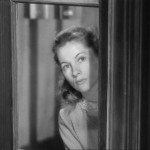
Letter from an Unknown Woman (1948)
Letter essentially follows the trajectory of a Thomas Hardy novel: Lisa pines desperately, refuses the proposal of an honorable suitor, and abandons her parents — all sacrifices made to her absurd romantic delusions.
-

The Scent of Green Papaya (1993)
The film actually becomes more interesting to me if I imagine Mui in twenty years, her beauty faded, her husband gone, and her spirit empowered.
-
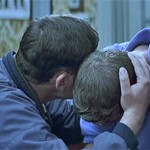
Bruno Dumont’s Bodies
This essay was originally published at Senses of Cinema.
-

Benito Cereno (1855)
As Mike Frank has recently asked, “What might narratology look like if we were to take cinema — particularly ‘classical Hollywood cinema’ — as the paradigmatic instance of storytelling?”
-

La Notte (1960)
Like Edward Hopper, Antonioni composes the frame with his heroine in the lower right corner, alienating her completely from her surroundings.
-

Breathless (1960)
Godard caused a sensation forty years ago with this, his first film, by not only tearing down cinematic and narrative conventions, but by doing so with a sly, mocking wink to his audience.
-

Cries and Whispers (1972)
Cries and Whispers is built from the simplest of premises: two wealthy women, both trapped in loveless marriages, return home to the family estate to comfort their dying sister.
-

Vive L’Amour (1994)
Walker Percy characterizes the 20th century American novel as a recurring investigation of “the essential loneliness of man.” It’s hardly an original conceit, but I was reminded of it constantly yesterday as I watched Vive L’Amour.
-
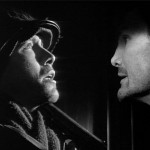
Attack! (1956)
The following was written for a graduate seminar on Cold War military history. It examines the confluence of social, political, and economic events that allowed the financing and production of such an ambivalent anti-war film in Eisenhower America.
-
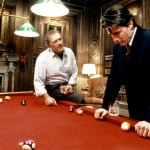
Eyes Wide Shut (1999)
The following was written for a graduate seminar on James Joyce and W.B. Yeats. Please forgive the fumbling psycho-babble. I think it actually serves a very legitimate reading of this film.